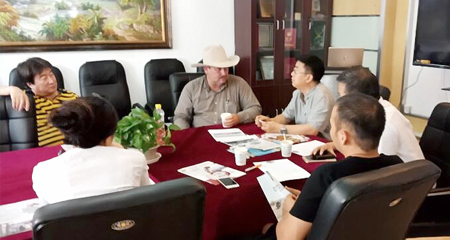China is among the main trade partners of Kyrgyzstan and Chinese investments significantly contribute to the economic development of the country, First Deputy Prime Minister of Kyrgyzstan Mukhammetkaly Abulgaziev said on October 13 at the 12th meeting of the Kyrgyz-Chinese intergovernmental commission on trade and economic cooperation.
A joint protocol was signed on cooperation in trade and investment, agriculture, forestry, construction, innovation, and inspection of imported and exported products.
Trade
According to Chinese Vice Minister of Commerce Fang Aiqing, trade between Kyrgyzstan and China reached $3.4 billion in the first eight months of 2016, which is 60% more compared to the same period last year.
However, the data of China and Kyrgyzstan vary considerably. According to the Statistics Committee of Kyrgyzstan, trade between the two countries amounted to $824 million in the first seven months of 2016.
Kyrgyzstan exports most of its products to the Eurasian Economic Union markets, mainly to Russia and Kazakhstan. China is Kyrgyzstan’s second-largest trading partner after Russia.
There is a serious imbalance in trade between the two countries. Kyrgyzstan imports more than it exports, said Kyrgyz Deputy Economy Minister Almaz Sazbakov. China's share in Kyrgyzstan’s trade turnover is about 30%, and the export is 2.1% while the import is 25.2%.
Implementation of a project to transfer production capacities from China to Kyrgyzstan and negotiations on cooperation between China and the EEU should improve the situation, Sazbakov said.
The geographical location and export potential of Kyrgyzstan could significantly increase exports of agricultural products to China. A 1.3-billion-strong Chinese market is huge, and employed population is about 707 million, more than in other countries of the world. The income of the Chinese middle class varies from $16 thousand to $34 thousand per year.
Kyrgyzstan suggested exporting meat and dairy products to China. The competitive advantage of Kyrgyz products is their high quality and organic nature, Sazbakov said.
Investments
China is interested in investing in the Kyrgyz economy, Chinese Vice Minister of Commerce said. Chinese investments in Kyrgyzstan amounted to $120 million in the first 8 months of 2016, 57.5% more compared to the same period in 2015.
Chinese investors are active in Kyrgyzstan. Fang Aiqing spoke about major successful Chinese investment projects including Junda and Tokmok oil refineries in the Chui province, Taldybulak Levoberezhny deposit, construction of the North-South motor road, reconstruction of the Bishkek thermal power plant, rehabilitation of the street network in Bishkek, and construction of a hotel in Osh in the south of the country.
A Chinese private company has built an agro-industrial park in Kyrgyzstan.
Kyrgyzstan suggested establishing a Kyrgyz-Chinese investment fund. To strengthen relations and develop the tourism industry, Kyrgyzstan proposed to launch a Bishkek-Beijing-Bishkek flight. Projects on creation of industrial parks in Kyrgyzstan are currently under consideration.
Railway project
The project to construct the China-Kyrgyzstan-Uzbekistan railway is still pending, Sazbakov said at the meeting.
The construction of the railway from China to Uzbekistan through Kyrgyzstan has been discussed for almost 20 years. Earlier, China presented its own railway project, with a 268 km track through Kyrgyzstan, while according to Kyrgyzstan's project the railway should be 112 km longer, bypassing the mountains to avoid building additional tunnels and thus saving money.
Three years ago, the Chinese side suggested an updated project, but Kyrgyzstan did not approve the track width. China uses the international 1,435 mm standard, while Kyrgyzstan uses the Soviet-era 1,520 mm standard.
Transfer of enterprises
Earlier this year, as part of the Silk Road Economic Belt project, Kyrgyzstan suggested transferring Chinese redundant enterprises to Kyrgyzstan. The Kyrgyz Economy Ministry made a list of about 40 idle enterprises engaged in various industries and located throughout the country. In May 2016, representatives of the Economy Ministry visited China to present their projects.
There are many companies in China that produce excessive production. The transfer of such production capacity would mean direct investments, the Kyrgyz Economy Ministry said. The plants will not be built from scratch, as they need equipment only. According to the ministry, thanks to this initiative new jobs will be created, tax payments will increase, and exports to the Eurasian Economic Union member countries will grow.
At the same time, some experts say that the transfer of production to another country is a kind of market penetration which carries devastating environmental consequences for the recipient country, as it is environmentally dirty production.
Times of Central Asia
Please
contact us in case of Copyright Infringement of the photo sourced from the internet, we will remove it within 24 hours.
